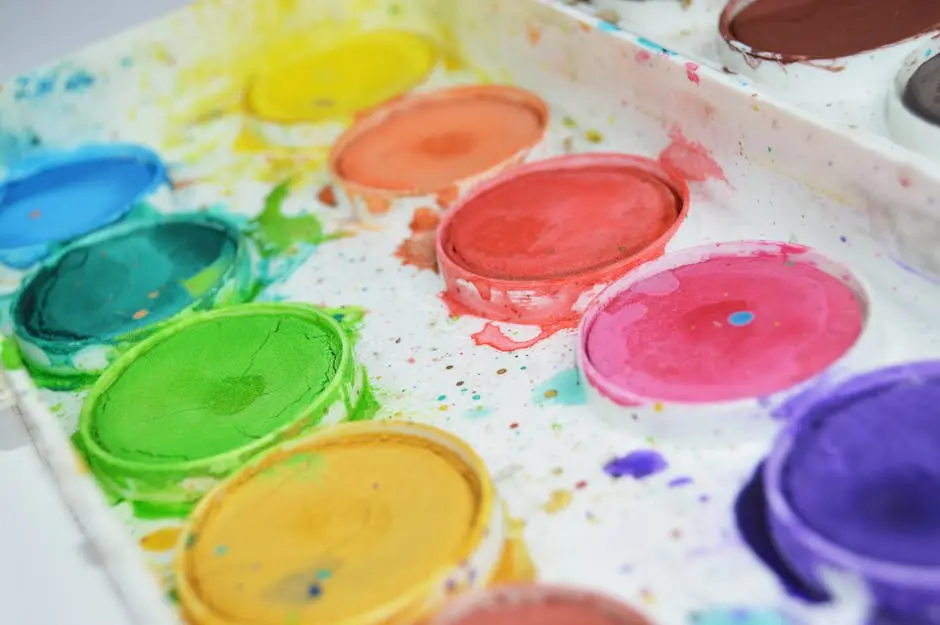การทำความเข้าใจคุณภาพของเม็ดสีเป็นสิ่งสำคัญสำหรับการบรรลุผลลัพธ์ที่ต้องการทั้งในงานศิลปะและการใช้งานในอุตสาหกรรม บล็อกนี้จะสำรวจปัจจัยต่างๆ ที่ส่งผลต่อคุณภาพของเม็ดสี เพื่อให้แน่ใจว่าคุณมีข้อมูลทั้งหมดที่จำเป็นในการตัดสินใจเลือก

องค์ประกอบทางเคมีของเม็ดสี
องค์ประกอบทางเคมีเป็นรากฐานของคุณภาพของเม็ดสี ธาตุและสารประกอบต่างๆ มีอิทธิพลต่อสี ความโปร่งใส และปฏิกิริยาของเม็ดสี การทำความเข้าใจเกี่ยวกับเคมีจะช่วยให้เลือกเม็ดสีที่เหมาะสมสำหรับการใช้งานเฉพาะได้
มาเจาะลึกส่วนประกอบสำคัญที่ประกอบเป็นเม็ดสีกัน โดยทั่วไปแล้วเม็ดสีจะประกอบด้วยสารประกอบอินทรีย์และอนินทรีย์ เม็ดสีอินทรีย์ซึ่งได้มาจากโมเลกุลคาร์บอนมักให้สีสันสดใสสำหรับการวาดภาพ ในทางกลับกัน เม็ดสีอนินทรีย์ซึ่งทำจากสารประกอบแร่มักมีเสถียรภาพมากกว่าและมักใช้ในงานอุตสาหกรรม
น่าสนใจที่จะสังเกตว่าเคมีของเม็ดสีสามารถส่งผลกระทบโดยตรงต่อคุณภาพของเม็ดสีได้อย่างไร ตัวอย่างเช่น การมีออกไซด์ของโลหะบางชนิดสามารถเปลี่ยนสีและความคงทนของเม็ดสีได้ ตัวอย่างเช่น ไททาเนียมไดออกไซด์ ซึ่งใช้กันอย่างแพร่หลายในการผลิตสีขาวสว่างเนื่องจากมีดัชนีการหักเหแสงสูงและสามารถกระจายแสงได้อย่างมีประสิทธิภาพ
อีกปัจจัยที่สำคัญคือความสามารถในการละลายของอนุภาคเม็ดสี เม็ดสีที่ไม่ละลายในตัวกลางที่ผสมเข้าด้วยกันมักจะให้สีที่สดใสและติดทนนานกว่า คุณสมบัตินี้ช่วยให้เม็ดสีไม่ละลายหรือทำปฏิกิริยากับสารยึดเกาะ จึงรักษาความสมบูรณ์ของสีไว้ได้เป็นเวลานาน
นอกจากนี้ มักมีการใส่สารเติมแต่งบางชนิดในระหว่างขั้นตอนการผลิตเม็ดสี สารเติมแต่งเหล่านี้สามารถเพิ่มคุณสมบัติต่างๆ เช่น การป้องกันรังสี UV ความมันวาว และคุณสมบัติต้านการกัดกร่อน เมื่อเข้าใจองค์ประกอบทางเคมีและบทบาทของส่วนประกอบแต่ละส่วนแล้ว คุณจะเข้าใจได้ดีขึ้นว่าเม็ดสีสร้างรูปแบบสุดท้ายที่มีคุณภาพสูงได้อย่างไร
กระบวนการผลิต
วิธีการผลิตเม็ดสีมีบทบาทสำคัญต่อคุณภาพของเม็ดสี เทคนิคการผลิต ความบริสุทธิ์ของวัตถุดิบ และความแม่นยำในการผสมส่วนผสมต่างๆ เป็นตัวกำหนดความสม่ำเสมอและประสิทธิภาพของเม็ดสี
ในการผลิต กระบวนการผลิตอาจมีความซับซ้อนและละเอียดอ่อนมาก วิธีการที่ใช้กันทั่วไปวิธีหนึ่งคือการตกตะกอน ซึ่งเม็ดสีที่ไม่ละลายน้ำจะเกิดขึ้นจากเกลือที่ละลายได้ในสารละลาย กระบวนการนี้ช่วยให้ควบคุมขนาดและรูปร่างของอนุภาคของเม็ดสีได้อย่างแม่นยำ ซึ่งทั้งสองอย่างนี้มีความสำคัญอย่างยิ่งต่อการทำให้ได้สีและเนื้อสัมผัสที่สม่ำเสมอ
การคัดเลือกวัตถุดิบเป็นอีกปัจจัยสำคัญ เม็ดสีคุณภาพสูงมักได้มาจากวัตถุดิบที่ปราศจากสิ่งเจือปน สิ่งเจือปนสามารถเปลี่ยนแปลงสี ความสม่ำเสมอ และประสิทธิภาพของผลิตภัณฑ์สำเร็จรูปได้ จึงจำเป็นต้องเริ่มต้นด้วยส่วนผสมที่ดีที่สุด ความหนาแน่นของเม็ดสี
เทคนิคการผสมยังมีบทบาทสำคัญในการกำหนดคุณภาพของเม็ดสี การผสมอย่างสม่ำเสมอช่วยให้มั่นใจได้ว่าอนุภาคของเม็ดสีจะกระจายตัวอย่างสม่ำเสมอภายในตัวกลาง ทำให้เกิดผลลัพธ์ที่สม่ำเสมอและเรียบเนียน เทคโนโลยีขั้นสูง เช่น เครื่องกระจายความเร็วสูงและเครื่องบดลูกบอล มักใช้เพื่อให้ได้ผลลัพธ์ที่สม่ำเสมอในระดับนี้
การบำบัดหลังการผลิต เช่น การบำบัดพื้นผิวและการเคลือบก็มีความสำคัญเช่นกัน การบำบัดเหล่านี้สามารถเพิ่มความเสถียรของเม็ดสี ความต้านทานต่อปัจจัยด้านสิ่งแวดล้อม และการโต้ตอบกับส่วนประกอบอื่นๆ ในสีได้ โดยการปรับปรุงคุณลักษณะเหล่านี้ ผู้ผลิตสามารถมั่นใจได้ว่าเม็ดสีจะมอบประสิทธิภาพที่เหมาะสมที่สุดสำหรับการใช้งานต่างๆ
ขนาดและการกระจายตัวของอนุภาค
ขนาดและการกระจายตัวของอนุภาคเม็ดสีสามารถส่งผลต่อความเข้มของสี เนื้อสัมผัส และความเสถียรของสี โดยทั่วไปอนุภาคขนาดเล็กจะให้ผลลัพธ์ที่เรียบเนียนกว่าและมีสีสันที่เข้มข้นกว่า ในขณะที่อนุภาคขนาดใหญ่กว่าอาจทำให้มีเนื้อสัมผัสที่หยาบกว่า
ประเด็นสำคัญประการหนึ่งที่ต้องพิจารณาคือขนาดอนุภาคที่แตกต่างกันสามารถสร้างเอฟเฟกต์ทางแสงที่แตกต่างกันได้ อนุภาคขนาดเล็กมักมีพื้นที่ผิวที่ใหญ่กว่า ซึ่งอาจส่งผลให้มีสีสันสดใสและเข้มข้นมากขึ้น ในทางกลับกัน อนุภาคขนาดใหญ่ก็อาจกระจายแสงแตกต่างกัน ซึ่งอาจทำให้สีดูหมองลงหรือเกิดเอฟเฟกต์พื้นผิวที่ไม่เหมือนกัน
การกระจายตัวของอนุภาคอย่างสม่ำเสมอภายในตัวกลางสีช่วยให้สีและเนื้อสัมผัสมีความสม่ำเสมอตลอดการใช้งาน การกระจายตัวที่ไม่สม่ำเสมออาจนำไปสู่ปัญหาต่างๆ เช่น การตกตะกอนหรือเป็นเส้น ซึ่งบางพื้นที่ของพื้นผิวที่ทาสีจะดูแตกต่างจากพื้นที่อื่นๆ เทคนิคต่างๆ เช่น การบดและการกระจายตัวจะถูกนำมาใช้เพื่อให้ได้ส่วนผสมที่เป็นเนื้อเดียวกัน ความหนาแน่นของเม็ดสี
การทำความเข้าใจการกระจายขนาดของอนุภาคยังเป็นสิ่งสำคัญสำหรับการใช้งานเฉพาะทาง ตัวอย่างเช่น ในสีรถยนต์ การกระจายขนาดของอนุภาคที่ละเอียดและสม่ำเสมอเป็นสิ่งจำเป็นในการสร้างพื้นผิวที่เรียบเนียนและสะท้อนแสงที่เห็นได้บนตัวรถ ในทางกลับกัน ศิลปินอาจมองหาขนาดอนุภาคที่หลากหลายเพื่อสร้างพื้นผิวและเอฟเฟกต์ภาพที่แตกต่างกันในผลงานของตน
นอกจากนี้ ยังควรกล่าวถึงด้วยว่าการรวมตัวของอนุภาคอาจส่งผลกระทบเชิงลบต่อคุณภาพของเม็ดสี การรวมตัวเกิดขึ้นเมื่ออนุภาคจับตัวกันเป็นกลุ่มใหญ่ขึ้นและไม่สม่ำเสมอกัน สิ่งนี้สามารถป้องกันได้โดยใช้เทคนิคการกระจายที่เหมาะสมและการใช้สารกระจาย ซึ่งจะช่วยรักษาขนาดของอนุภาคให้สม่ำเสมอตลอดทั้งตัวกลางสี
เสถียรภาพด้านสิ่งแวดล้อม
ปัจจัยด้านสิ่งแวดล้อม เช่น การสัมผัสแสง ความชื้น และการเปลี่ยนแปลงอุณหภูมิ อาจทำให้เม็ดสีเสื่อมสภาพลงได้เมื่อเวลาผ่านไป เม็ดสีที่มีความต้านทานต่อปัจจัยเหล่านี้ได้ดีกว่าจะช่วยให้สีและการตกแต่งติดทนนานขึ้น
ความคงทนต่อแสงเป็นปัจจัยที่สำคัญที่สุดประการหนึ่งในการคงความเสถียรของสิ่งแวดล้อม ซึ่งหมายถึงความสามารถของเม็ดสีในการต้านทานการซีดจางเมื่อถูกแสง คุณสมบัตินี้มีความสำคัญอย่างยิ่งสำหรับการใช้งานกลางแจ้งและงานศิลปะที่จัดแสดงในบริเวณที่มีแสงสว่างเพียงพอ เม็ดสีที่ขาดความคงทนต่อแสงอาจเสื่อมสภาพลงเมื่อเวลาผ่านไป ทำให้สีซีดจางและสูญเสียความสดใส
ความต้านทานความชื้นเป็นอีกปัจจัยสำคัญ สีมักเผชิญกับระดับความชื้นที่แตกต่างกัน โดยเฉพาะในพื้นที่กลางแจ้ง เม็ดสีที่ไวต่อความชื้นอาจบวม ละลาย หรือทำปฏิกิริยากับส่วนประกอบอื่นในสี ส่งผลให้สีเสื่อมสภาพ การเลือกเม็ดสีที่ทนต่อความชื้นได้ดีจะช่วยรักษาความสมบูรณ์และรูปลักษณ์ของพื้นผิวที่ทาสีได้ ความหนาแน่นของเม็ดสี
ความผันผวนของอุณหภูมิอาจส่งผลกระทบต่อเสถียรภาพของเม็ดสี อุณหภูมิที่สูงอาจทำให้เม็ดสีขยายตัว ในขณะที่อุณหภูมิที่ต่ำอาจทำให้เม็ดสีหดตัว การเปลี่ยนแปลงเหล่านี้อาจทำให้เกิดรอยแตกร้าว ลอก หรือเสื่อมสภาพในรูปแบบอื่นๆ เม็ดสีที่สามารถทนต่อการเปลี่ยนแปลงของอุณหภูมิถือเป็นสิ่งสำคัญในการให้ประสิทธิภาพของสีที่ทนทานและเชื่อถือได้ในสภาพอากาศที่แตกต่างกัน
นอกจากนี้ สารเคมีและมลพิษในสิ่งแวดล้อมสามารถโต้ตอบกับเม็ดสี ส่งผลให้เม็ดสีเสื่อมสภาพได้ สารเคลือบป้องกันและสารเติมแต่งมักใช้เพื่อป้องกันเม็ดสีจากปัจจัยดังกล่าว ซึ่งจะช่วยยืดอายุการใช้งานของผลิตภัณฑ์สำเร็จรูป การทำความเข้าใจสภาพแวดล้อมเฉพาะที่เม็ดสีจะถูกใช้จะช่วยในการเลือกทางเลือกที่เหมาะสมและทนทานที่สุด
สรุป: ปัจจัยหลักที่มีอิทธิพลต่อคุณภาพเม็ดสี
โดยสรุป คุณภาพของเม็ดสีจะขึ้นอยู่กับองค์ประกอบทางเคมี กระบวนการผลิต ขนาดของอนุภาค และความเสถียรของสิ่งแวดล้อม เมื่อเข้าใจปัจจัยเหล่านี้แล้ว คุณจะสามารถเลือกเม็ดสีที่เหมาะสมเพื่อให้ได้ผลลัพธ์ที่ดีที่สุดสำหรับโครงการของคุณได้